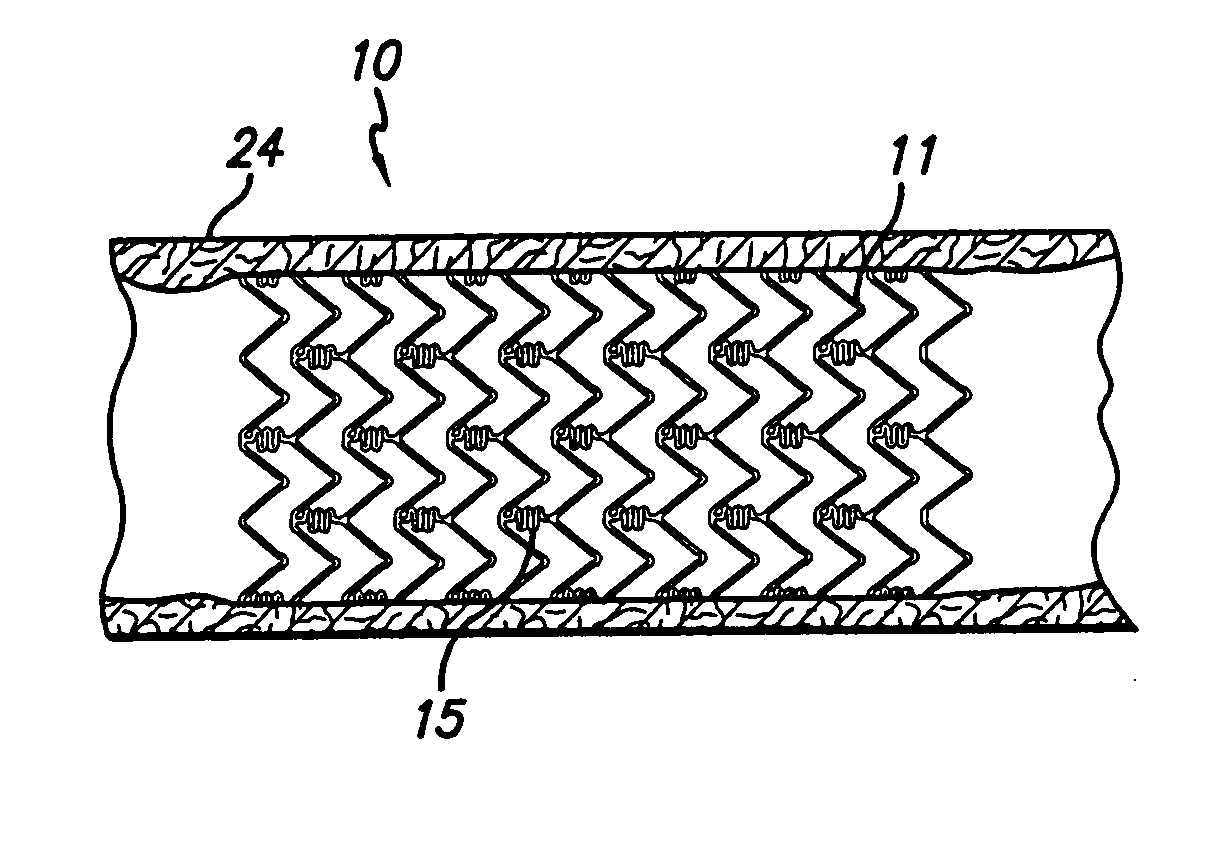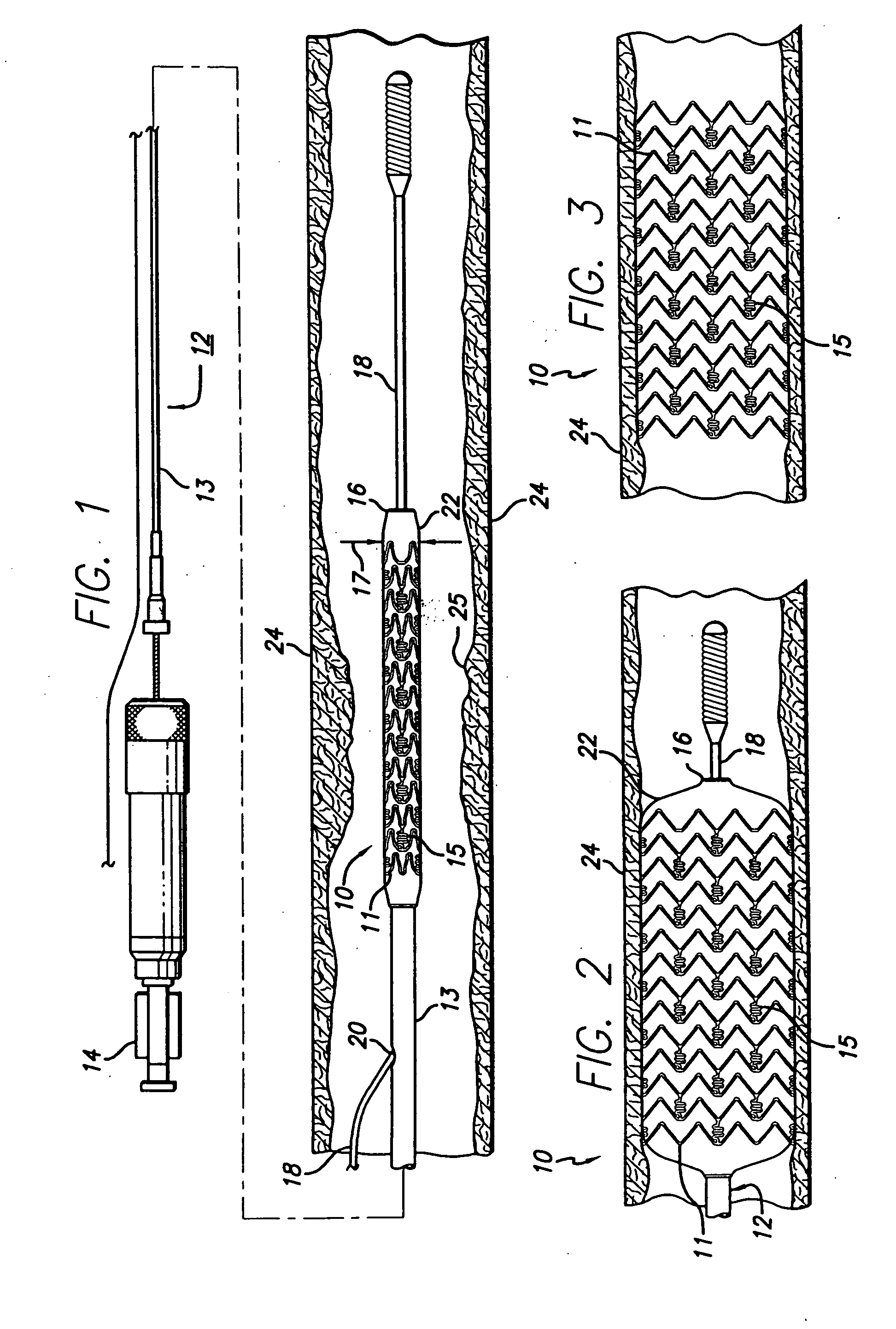Degradable medical device
a medical device and degradable technology, applied in the field of medical devices, can solve the problems of only needing stent support, invasive retrieval of stents, and inconvenient use, and achieve the effect of reducing the corrosion of the underlying metal structure, and reducing the risk of infection
- Summary
- Abstract
- Description
- Claims
- Application Information
AI Technical Summary
Benefits of technology
Problems solved by technology
Method used
Image
Examples
Embodiment Construction
[0017]FIG. 1 generally depicts a corrodible metal stent 10, incorporating features of the invention, mounted on a catheter assembly 12 which is used to deliver the stent and implant it in a body lumen, such as a coronary artery, carotid artery, peripheral artery, or other vessel or lumen within the body. The stent generally comprises a plurality of radially expandable cylindrical rings 11 disposed generally coaxially and interconnected by undulating links 15 disposed between adjacent cylindrical elements. The catheter assembly includes a catheter shaft 13 which has a proximal end 14 and a distal end 16. The catheter assembly is configured to advance through the patient's vascular system by advancing over a guide wire by any of the well known methods of an over the wire system (not shown) or a well known rapid exchange catheter system, such as the one shown in FIG. 1.
[0018] Catheter assembly 12 as depicted in FIG. 1 is of the well known rapid exchange type which includes an RX port ...
PUM
| Property | Measurement | Unit |
|---|---|---|
| Electric potential / voltage | aaaaa | aaaaa |
| Porosity | aaaaa | aaaaa |
| Force | aaaaa | aaaaa |
Abstract
Description
Claims
Application Information
 Login to View More
Login to View More - R&D
- Intellectual Property
- Life Sciences
- Materials
- Tech Scout
- Unparalleled Data Quality
- Higher Quality Content
- 60% Fewer Hallucinations
Browse by: Latest US Patents, China's latest patents, Technical Efficacy Thesaurus, Application Domain, Technology Topic, Popular Technical Reports.
© 2025 PatSnap. All rights reserved.Legal|Privacy policy|Modern Slavery Act Transparency Statement|Sitemap|About US| Contact US: help@patsnap.com


